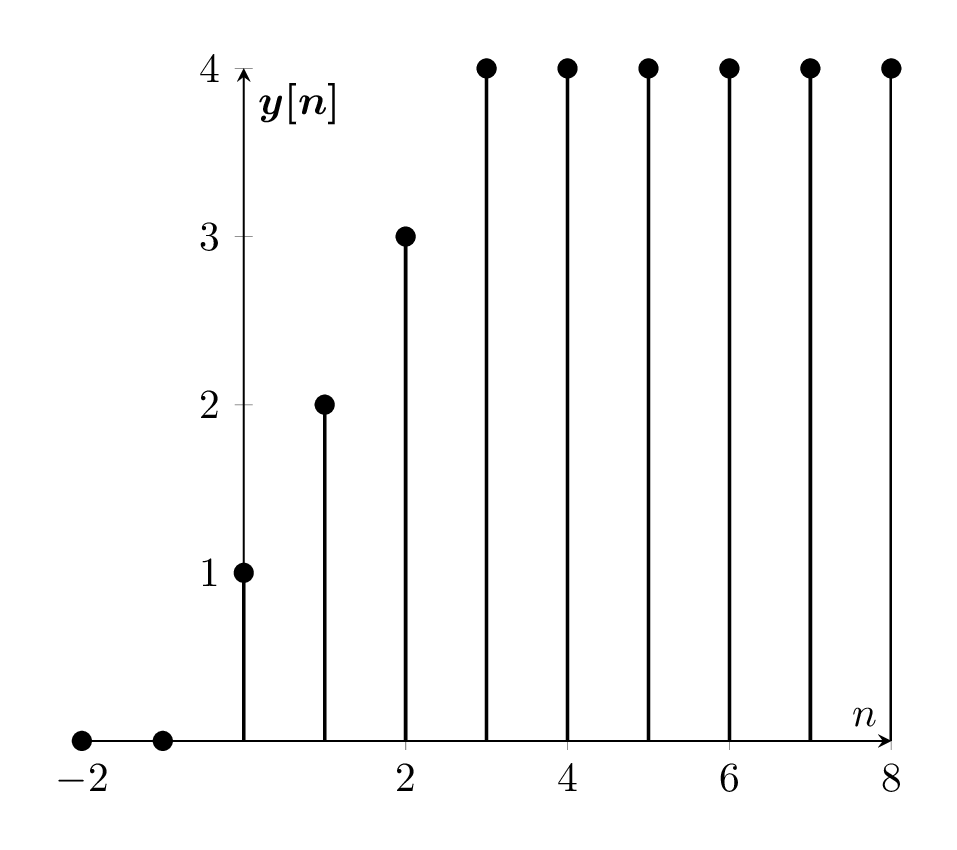Description
The code is a LaTeX document that creates a simple graph of a discrete-time signal using the TikZ and pgfplots packages. The signal is defined by a data file called "data.dat" that contains two columns of data representing the discrete-time index and the signal value, respectively.
The graph is created using the "axis" environment provided by pgfplots. The x-axis and y-axis are labeled using the "xlabel" and "ylabel" commands, and the tick marks on the x-axis are set using the "xtick" command. The "ymin" and "ymax" commands set the minimum and maximum values of the y-axis.
Finally, the signal is plotted using the "ycomb" command to create a stem plot, with the data read in from the "data.dat" file. The resulting graph shows the discrete-time signal as a sequence of discrete values at integer time indices.
Keywords
tikzpicture, axis, xlabel, ylabel, xtick, ymin, ymax, addplot, ycomb, black, thick, table.
Source Code

\documentclass[border={10pt}]{standalone}
\usepackage{tikz,pgfplots,filecontents,amsmath}
\pgfplotsset{compat=1.5}
\begin{filecontents}{data.dat}
n yn
-2 0.0
-1 0.0
0 1.0
1 2.0
2 3.0
3 4.0
4 4.0
5 4.0
6 4.0
7 4.0
8 4.0
% 3 0.0
%4 0.0
% 5 0.0
\end{filecontents}
\begin{document}
\begin{tikzpicture}
\begin{axis}
[%%%%%%%%%%%%%%%%%%%%%%%%%%%%%%%%%%%
axis x line=middle,
axis y line=middle,
every axis x label={at={(current axis.right of origin)},anchor=north west},
every axis y label={at={(current axis.above origin)},anchor= north west},
every axis plot post/.style={mark options={fill=black}},
xlabel={$n$},
ylabel={$\boldsymbol{y[n]}$},
xtick={-2,0, ..., 8},
ymin=0,
ymax=4,
]%%%%%%%%%%%%%%%%%%%%%%%%%%%%%%%%%%%
\addplot+[ycomb,black,thick] table [x={n}, y={yn}] {data.dat};
\end{axis}
\end{tikzpicture}
\end{document}